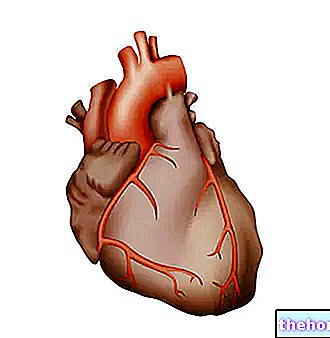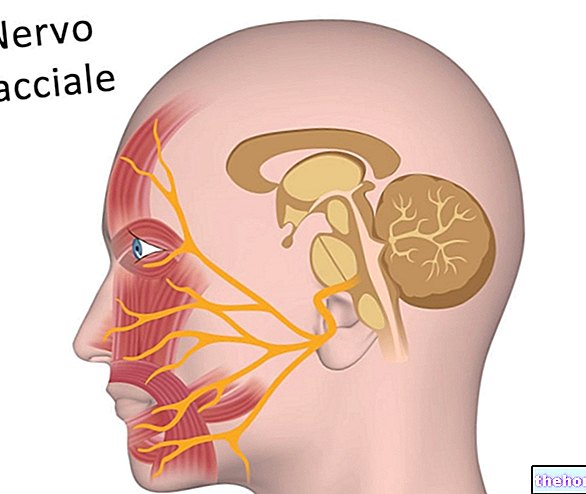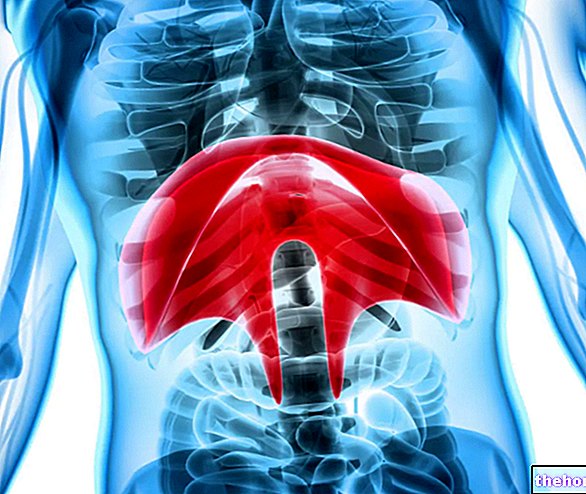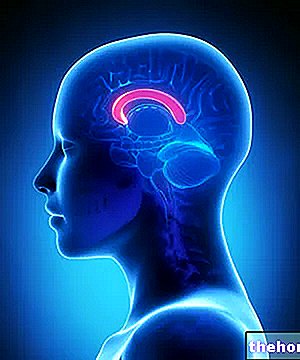Generality
The sacrum is the unequal, asymmetrical and triangular bone, which takes place between the lumbar and coccygeal tracts of the vertebral column.

The sacrum forms 4 joints: the two sacroiliac joints, the joint with the last lumbar vertebra and the joint with the coccyx.
The functions of the sacrum are two: to provide protection to the sacral tract of the spinal cord and to support the upper part of the human body when an individual walks, runs, etc.
What is the sacrum?
The sacrum is an uneven, asymmetrical and triangular shaped bone, which resides in the lower part of the vertebral column, exactly between the lumbar spine and the coccyx.
In fact, the sacrum represents the back and center of the pelvis (or pelvis).
Pelvis bones: what are they?
In addition to the sacrum, the two iliac bones and the coccyx take part in the constitution of the pelvis.
Anatomy

Figure: sacrum and other pelvic bones. In the image, readers can recognize the sacroiliac joints, which have the important task of supporting the weight of the body during standing, walking, etc.
Concave inwards, the sacrum is, for the most part, the result of the fusion of the 5 sacral vertebrae of the vertebral column.
In describing the sacrum, anatomists recognize at least 6 extremely relevant regions: the so-called base of the sacrum, the so-called apex of the sacrum, the two lateral surfaces, the pelvic surface and the dorsal surface.
BASE OF THE SACRED
The base of the sacrum is the broad and flat bony region, projected upward, which borders and articulates with the fifth lumbar vertebra. The fifth lumbar vertebra is the last vertebra of the lumbar spine.
The base of the sacrum includes several bony portions of some importance, including: the so-called sacral promontory and the two lateral projections, identified with the term wings (or sacral wings).
- Sacral promontory. Faced towards the inside of the human body and comprising part of the iliopectinous line and part of the terminal line, the sacral promontory is the bony portion that connects and articulates the first sacral vertebra with the fifth lumbar vertebra.
The joint existing between the first sacral vertebra and the last lumbar vertebra forms the so-called vertebral sacrum.
APEX OF THE SACRED
The apex of the sacrum is the bony region projected downwards and presenting a flat and oval-shaped area (“oval facet”), which articulates with the coccyx; the coccyx is the last part of the vertebral column.
PELVIC SURFACE
Moderately inclined downwards, the so-called pelvic surface is the region of the sacrum that looks anteriorly (therefore in the direction of the interior of the human body). It is slightly curved, with the concavity it gives rise to, which faces inwards.
On the pelvic surface, four transverse bone crests are recognizable, which represent the boundaries of separation of the 5 sacral vertebrae.
With a view from top to bottom, the first of the 5 sacral vertebrae has a very large vertebral body; starting from the second sacral vertebra, the size of the various vertebral bodies is decreasing.
On the sides of where each transverse crest ends, two holes take place, called anterior sacral holes. If, in total, the transverse crests are 4, the anterior sacral holes are in all 8.
The role of the 8 anterior sacral holes is to allow the passage of the sacral nerves (outgoing) and the lateral sacral arteries (incoming).
DORSAL SURFACE
Slightly inclined upward, the so-called dorsal surface is the region of the sacrum that looks posteriorly. In fact, it represents the posterior (or opposite) side of the pelvic surface. This means that it is curved too, but it is convex rather than concave.
On the dorsal surface, various elements are recognizable:
- In the center and with a direction from "top to bottom, c" is the so-called median sacral crest. Arising from the fusion of the spinous processes of the sacral vertebrae, the median sacral crest gives life to 3 or 4 tubercles and represents the attachment point of the supraspinatus ligament.
- On both sides of the median sacral crest, the so-called intermediate sacral crests take place, one on the right and one on the left. Arising from the fusion of the articular processes of the sacral vertebrae, the intermediate sacral crests serve as an attachment point for the posterior sacral iliac ligaments.
The lower portions of the two intermediate sacral crests have two characteristic bony outgrowths, which are called sacral horns. The sacral horns are connected to the coccyx horns. - Inside the bony portion that includes the median sacral crest and the intermediate sacral crests, the so-called sacral canal develops. The sacral canal is none other than the spinal canal section formed by the sacral vertebrae. Inside it takes place the sacral section of the spinal cord.
The sacral canal typically ends at the level of the fourth sacral vertebra, with a structure known as the sacral hiatus (hiatus sacrale). - Lateral to each intermediate sacral crest, they locate the so-called 4 posterior sacral holes, which have the task of allowing the passage of the spinal nerves.
- Externally to the posterior sacral holes, both on the right and on the left, the transverse processes of the sacral vertebrae develop, which give rise to the so-called lateral sacral crests.
The lateral sacral crests represent the attachment point for the posterior sacroiliac ligaments and the sacrotuberous ligaments.

SIDE SURFACES
The two lateral surfaces are the regions of the sacrum that articulate with the right iliac bone and the left iliac bone, giving life to the two so-called sacroiliac joints.
The side surfaces are wide at the top and narrow at the bottom.
The most important anatomical elements of the lateral surfaces are:
- The rough surface that makes contact with the iliac bone. It is the true architect of the sacroiliac joint on each side of the sacrum;
- The sacral tuberosity. Located behind the aforementioned rough surface, it represents an attachment point for the posterior sacro-iliac ligaments;
- The attachment points for the sacrotuberous and sacrospinous ligaments.
ARTICULATIONS
The sacrum takes part in 4 joints:
- The two joints with the iliac bones, the one on the right and the one on the left. The joint that the sacrum establishes with one of the two iliac bones is the aforementioned sacro iliac joint;
- The joint with the last lumbar vertebra;
- The joint with the first coccygeal vertebrae.
MUSCLES
On the pelvic surface and on the dorsal surface, various muscles originate and terminate, both of the lower limbs and of the back.
The muscular elements associated with the pelvic surface of the sacrum are:
- The piriformis muscle: originates in the sacrum, precisely in the space between the second and fourth sacral vertebrae. It ends by hooking onto the greater trochanter of the femur.
It allows the human being to externally rotate, abduct, extend and stabilize the hip joint. - The coccygeal muscle: originates in the lower part of the sacrum and ends at the level of the coccyx. It provides support to the pelvic cavity and allows the coccygeal region of the spine to be slightly flexed.
- The iliac muscle: has a shared origin between the iliac fossa of the iliac bone and the wings of the sacrum (base of the sacrum). It ends at the lesser trochanter of the femur.
It has two functions: it stabilizes the hip joint and allows the leg to be flexed up to the height of the hip.
The muscular elements associated with the dorsal surface of the sacrum, on the other hand, are:
- The lumbar multifidus muscle: the fibers that compose it originate in the area next to the posterior sacral holes, then pass over these, oriented obliquely, and terminate at the level of the spinous process of the superior vertebra.
The lumbar multifidus muscle helps stabilize the spine. - The erector muscle of the spine: it originates in the intermediate sacral crest (N.B: ce n "is one on each side) and ends in various points of the spine and beyond.
Allows extension and flexion of the head and spine.
BLOOD VESSELS
The arterial vessels that enter into relation with the sacrum are the median sacral arteries and the lateral sacral arteries.
The median sacral arteries are a posterior continuation of the abdominal aorta. They supply blood to the posterior section of the rectum, the coccygeal glomus, the meninges of the sacral tract of the spinal cord, and the sacrum.
The lateral sacral arteries, on the other hand, arise from the posterior division of the internal iliac artery. They supply blood to the meninges of the sacral tract of the spinal cord, the sacrum and the surrounding muscles.
DEVELOPMENT
The formation of the sacral vertebrae takes place on the 29th day of embryogenesis.
Their definitive fusion is a process that, in the human being, occurs between 18 and 30 years of life.
Function
The functions of the sacrum are two: to provide protection to the sacral tract of the spinal cord and to support the weight of the human upper body when an individual stands, walks, runs, etc.
The protective function belongs to the sacral vertebrae fused together. The protective properties of the sacral vertebrae are a point in common with all the other vertebrae of the spinal column.
The support function, on the other hand, belongs to the sacro iliac joint, the result of the interaction between the sacrum and the iliac bone.
Associated pathologies
The most important problems that can affect the sacrum are bone fractures and an inflammatory condition known as sacroiliitis.
Bone fractures are typically injuries of a traumatic nature, due to accidental falls, car accidents and similar circumstances.
Sacroiliitis, on the other hand, is inflammation of the joints that connect the sacrum to the iliac bone. The main causes of sacroiliitis include: injuries of traumatic origin, arthritis, pregnancy and various types of infections .









.jpg)


















